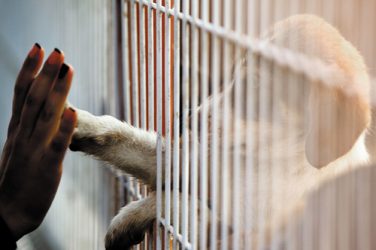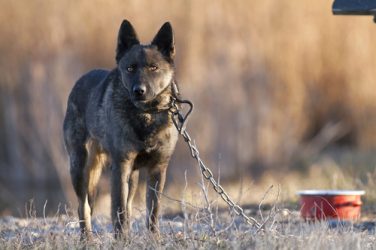Training a puppy is no easy task. There’s a long period of time where you have to build communication and trust with your new companion. There’s a lot for both of you to learn. Three of the most common issues new dog owners face are dealing with separation anxiety, house training, and crate training.
Separation Anxiety
Separation anxiety can lead to behavioral issues down the road, so it’s important to teach your puppy how to be alone when you can’t be home. Your dog should enjoy alone time, or you may wind up having spend a lot of money on doggy daycare; it’s up to you to make sure they learn that being alone can be a positive thing.
Here are some tips for getting them to adjust to alone-time:
1) Use a confinement area like a room or a crate.
2) Start by giving them something to do in the area, such as a chew toy or a Kong. Walk away quietly while they’re busy and then return with a treat shortly. Slowly increase the time you spend away.
3) Build happy associations with alone time, leaving with them toys or edible chews.
House Training
House training a new puppy is an exercise in patience and there are bound to be accidents. But there’s a tried-and-true system you can rely on to make sure the process happens quickly:
1) Get into a Routine – A regular schedule will help your pup learn when it’s time to eat, play, sleep, and when it’s time to do their business. As a rule of thumb, young dogs can hold their bladders for one hour per month in age, i.e., a 2-month old can’t go longer than 2 hours, or there will be an accident.
2) Pick a Spot – Encourage your dog to head to the same spot in the backyard. If, like many new dog-owners, you live in an apartment or condo, you can get an all-natural grass pee pad for the balcony. Dogs instinctively head toward the grass to eliminate. You can also use a pee pad during house training to prevent accidents or when you have to be away at work for too long.
All-natural grass pee pads are easier than fake, plastic options. The grass naturally decomposes urine and controls odors. You never have to clean it in the bathtub. If you’re looking for an all-natural grass pee pad, stop by Pooch Patch to see what’s available.
3) Reward – When they’re young, positive reinforcement goes a long way. Praise and treats are in order after they’ve eliminated outside, but be sure to hand out the reward before they come inside.
Get Used to the Crate
When you go to work during the day and leave the puppy alone, they’re bursting with energy. From getting into the garbage to chewing up the sofa, dogs can do a lot of damage when left unattended. In fact, our canine friends cause on average $400 in property damage each year.
No one wants to see chewed corners on their brand-new sofa, so if you’ve brought a dog into your home, it’s best to use a crate when you’re gone for the day. First, make sure the crate is spacious enough to be comfortable, meaning your pooch can turn around inside with ease.
Second, make the crate feel comfortable. Put in a dog bed, make sure they have access to food and water, and don’t use the crate as a punishment. You can make the dog feel like their crate is their safe place, and they’ll even start to hang out there with the door wide open.
Finally, during the day, it’s best if you only use the crate for 4 hours at a time. They need exercise and a chance to do their business outside. If you can’t make it home for lunch, see if a family member can help you out, or find a dog walker.







